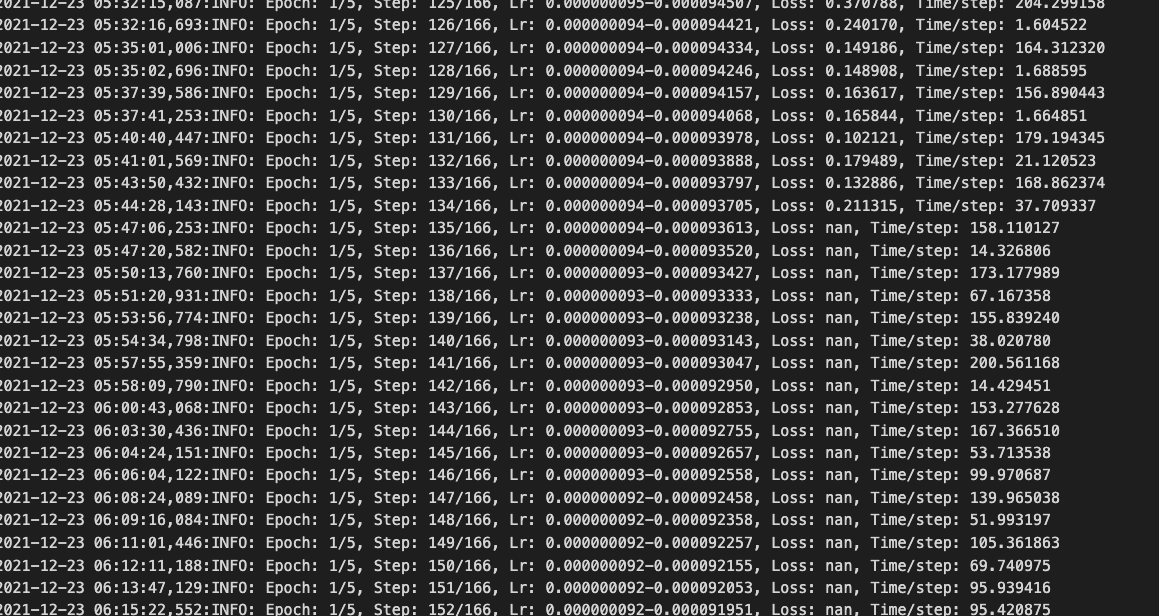(July 28, 2021) Add ViT-B/16 with an extra --pretrained_clip_name
(Apr. 22, 2021) First version
The implementation of paper CLIP4Clip: An Empirical Study of CLIP for End to End Video Clip Retrieval.
CLIP4Clip is a video-text retrieval model based on CLIP (ViT-B). We investigate three similarity calculation approaches: parameter-free type, sequential type, and tight type, in this work. The model achieve SOTA results on MSR-VTT, MSVD, LSMDC, ActivityNet, and DiDeMo.
# From CLIP
conda install --yes -c pytorch pytorch=1.7.1 torchvision cudatoolkit=11.0
pip install ftfy regex tqdm
pip install opencv-python boto3 requests pandasFor MSRVTT
The official data and video links can be found in link.
For the convenience, you can also download the splits and captions by,
wget https://github.com/ArrowLuo/CLIP4Clip/releases/download/v0.0/msrvtt_data.zipBesides, the raw videos can be found in sharing from Frozen️ in Time, i.e.,
wget https://www.robots.ox.ac.uk/~maxbain/frozen-in-time/data/MSRVTT.zipFor MSVD
Raw videos can be download from link.
The splits and raw_captions can be found in the wonderful job collaborative-experts. For the convenience, you can also download them by,
wget https://github.com/ArrowLuo/CLIP4Clip/releases/download/v0.0/msvd_data.zipFor LSMDC
You must obtain permission from MPII to download and use the data. The download link is here. The 1000 test clips data is link. Read our paper and the dataloader for more information.
For ActivityNet
The official websit has made the full dataset available on Google and Baidu drives, see more information at here . The splits can be found in the job collaborative-experts.
For DiDeMo
Raw videos can be download from LisaAnne/LocalizingMoments. The splits can be found in the job collaborative-experts.
python preprocess/compress_video.py --input_root [raw_video_path] --output_root [compressed_video_path]This script will compress the video to 3fps with width 224 (or height 224). Modify the variables for your customization.
--features_pathis the video root path
--linear_patchcan be set with2dor3d
--sim_headercan be set withmeanP,seqLSTM,seqTransf, ortightTransf
--pretrained_clip_namecan be set withViT-B/32orViT-B/16
--resume_modelcan be used to reload the saved optimizer state to continuely train the model, Note: need to set the corresponding chechpoint via--init_modelsimultaneously.
read our paper for more details on --linear_patch and --sim_header. Test more hyperparameters for better performance.
Download CLIP (ViT-B/32) weight,
wget -P ./modules https://openaipublic.azureedge.net/clip/models/40d365715913c9da98579312b702a82c18be219cc2a73407c4526f58eba950af/ViT-B-32.ptor, download CLIP (ViT-B/16) weight,
wget -P ./modules https://openaipublic.azureedge.net/clip/models/5806e77cd80f8b59890b7e101eabd078d9fb84e6937f9e85e4ecb61988df416f/ViT-B-16.ptThen, run
The CLIP (ViT-B/32) is the default setting in the paper, replacing with the ViT-B/16 for better performance.
DATA_PATH=[Your MSRVTT data and videos path]
python -m torch.distributed.launch --nproc_per_node=4 \
main_task_retrieval.py --do_train --num_thread_reader=0 \
--epochs=5 --batch_size=128 --n_display=50 \
--train_csv ${DATA_PATH}/MSRVTT_train.9k.csv \
--val_csv ${DATA_PATH}/MSRVTT_JSFUSION_test.csv \
--data_path ${DATA_PATH}/MSRVTT_data.json \
--features_path ${DATA_PATH}/MSRVTT_Videos \
--output_dir ckpts/ckpt_msrvtt_retrieval_looseType \
--lr 1e-4 --max_words 32 --max_frames 12 --batch_size_val 16 \
--datatype msrvtt --expand_msrvtt_sentences \
--feature_framerate 1 --coef_lr 1e-3 \
--freeze_layer_num 0 --slice_framepos 2 \
--loose_type --linear_patch 2d --sim_header meanP \
--pretrained_clip_name ViT-B/32DATA_PATH=[Your MSVD data and videos path]
python -m torch.distributed.launch --nproc_per_node=4 \
main_task_retrieval.py --do_train --num_thread_reader=2 \
--epochs=5 --batch_size=128 --n_display=50 \
--data_path ${DATA_PATH} \
--features_path ${DATA_PATH}/MSVD_Videos \
--output_dir ckpts/ckpt_msvd_retrieval_looseType \
--lr 1e-4 --max_words 32 --max_frames 12 --batch_size_val 16 \
--datatype msvd \
--feature_framerate 1 --coef_lr 1e-3 \
--freeze_layer_num 0 --slice_framepos 2 \
--loose_type --linear_patch 2d --sim_header meanP \
--pretrained_clip_name ViT-B/32DATA_PATH=[Your LSMDC data and videos path]
python -m torch.distributed.launch --nproc_per_node=4 \
main_task_retrieval.py --do_train --num_thread_reader=2 \
--epochs=5 --batch_size=128 --n_display=50 \
--data_path ${DATA_PATH} \
--features_path ${DATA_PATH}/LSMDC_Videos \
--output_dir ckpts/ckpt_lsmdc_retrieval_looseType \
--lr 1e-4 --max_words 32 --max_frames 12 --batch_size_val 16 \
--datatype lsmdc --feature_framerate 1 --coef_lr 1e-3 \
--freeze_layer_num 0 --slice_framepos 2 \
--loose_type --linear_patch 2d --sim_header meanP \
--pretrained_clip_name ViT-B/32ActivityNet is regarded as video-paragraph retrieval in our setting, thus, need more GPUs (or run with multi-node).
DATA_PATH=[Your ActivityNet data and videos path]
python -m torch.distributed.launch --nproc_per_node=8 \
main_task_retrieval.py --do_train --num_thread_reader=2 \
--epochs=5 --batch_size=128 --n_display=50 \
--data_path ${DATA_PATH} \
--features_path ${DATA_PATH}/Activity_Videos \
--output_dir ckpts/ckpt_activity_retrieval_looseType \
--lr 1e-4 --max_words 64 --max_frames 64 --batch_size_val 16 \
--datatype activity --feature_framerate 1 --coef_lr 1e-3 \
--freeze_layer_num 0 --slice_framepos 2 \
--loose_type --linear_patch 2d --sim_header meanP \
--pretrained_clip_name ViT-B/32DiDeMo is regarded as video-paragraph retrieval in our setting, thus, need more GPUs (or run with multi-node).
DATA_PATH=[Your DiDeMo data and videos path]
python -m torch.distributed.launch --nproc_per_node=8 \
main_task_retrieval.py --do_train --num_thread_reader=2 \
--epochs=5 --batch_size=128 --n_display=50 \
--data_path ${DATA_PATH} \
--features_path ${DATA_PATH}/DiDeMo_Videos \
--output_dir ckpts/ckpt_didemo_retrieval_looseType \
--lr 1e-4 --max_words 64 --max_frames 64 --batch_size_val 16 \
--datatype didemo --feature_framerate 1 --coef_lr 1e-3 \
--freeze_layer_num 0 --slice_framepos 2 \
--loose_type --linear_patch 2d --sim_header meanP \
--pretrained_clip_name ViT-B/32If you find CLIP4Clip useful in your work, you can cite the following paper:
@Article{Luo2021CLIP4Clip,
author = {Huaishao Luo and Lei Ji and Ming Zhong and Yang Chen and Wen Lei and Nan Duan and Tianrui Li},
title = {{CLIP4Clip}: An Empirical Study of CLIP for End to End Video Clip Retrieval},
journal = {arXiv preprint arXiv:2104.08860},
year = {2021},
}



